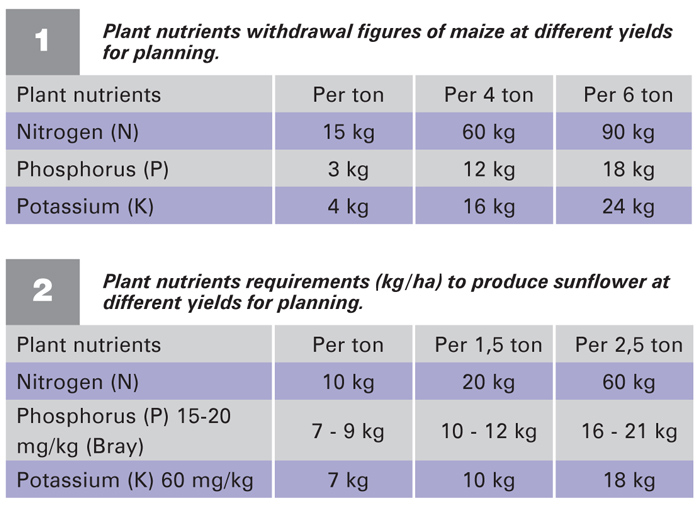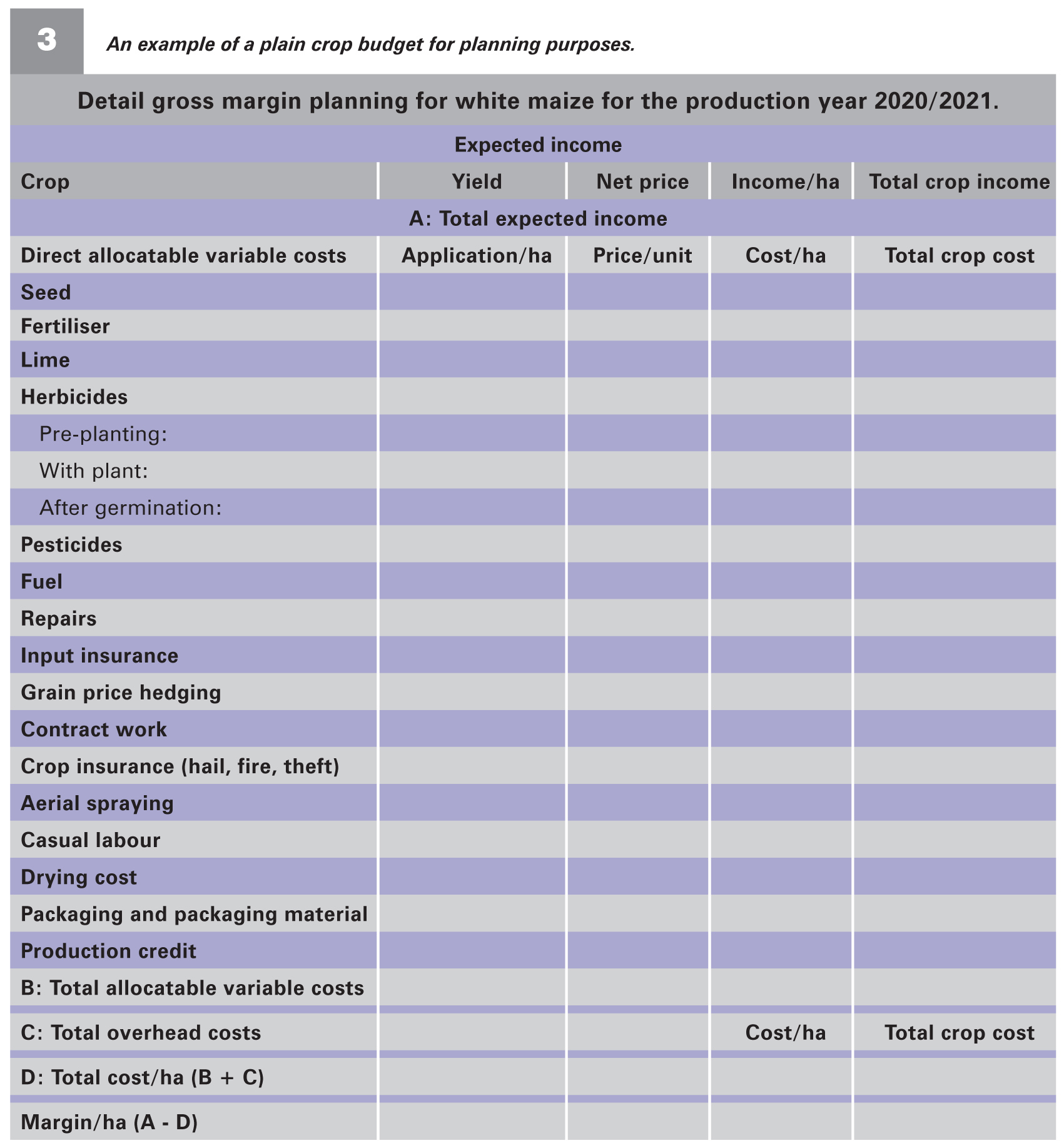January 2023
| PIETMAN BOTHA, INDEPENDENT AGRI- CULTURAL CONSULTANT |
 |
January is the most important month for farmers. Although it is not planting time yet, farmers must start planning ahead. They have to make decisions like what to plant and what to buy for the next production year.
Like most businessmen, farmers must manage their tax obligations. In most cases the tax year will end at the end of February. So you need to calculate your profit situation in January. If a profit is declared to the South African Revenue Service (SARS), tax needs to be paid – but farmers can manage their profit situation by buying inputs.
If a profit is expected, a farmer could buy inputs. The question is which inputs to buy. This depends on what will be planted. It means that farmers should be a step ahead in the planning process to decide what to buy.
PROFITABILITY
It is important for a farmer to calculate the expected profitability of the different crops he can plant. The way this is done, is actually simple. For every crop, ask advice from the representatives of the different input suppliers and get a recommendation for the different crops that you can plant.
For example, this would mean that the Pannar representative will tell you what cultivar and what plant population to plant on your farm. This information and cost will be the seed cost. This information is needed for every crop that can be planted on your farm.
FERTILISER
For fertiliser, the Omnia representative as an example will make use of your previous soil sample information, the current crop and yield on the fields, as well as the soil potential maps to determine the expected yield and calculate the fertiliser that will be needed. With this information, the cost of fertiliser and lime can be calculated.
The Fertilizer Association of Southern Africa (Fertasa) publishes the fertiliser withdrawal figures per crop on a regular basis. In Table 1 the plant nutrients withdrawal figures of maize at different yields for planning are shown. The plant nutrients requirements (kg/ha) for sunflower planted on a sandy loam soil type, with a 15% to 20% clay percentage, is shown in Table 2. The same information is available for all the other crops.

WEED CONTROL
Weed control can also be predicted. It is now the ideal time to go through your fields with your chemical representative. This is very important because you can evaluate your weed control and pesticide programme applied, and the representative can help make adjustments to your next programmes. This representative will supply you with a new programme and cost for the new season.
If you are a clever farmer, you will arrange that all the representatives and their agronomists will be on your farm simultaneously. Ask their honest opinion and recommendations per crop about your production in order to reach your long-term goals.
Implement these recommendations and you will reap the fruit.
DIESEL AND MAINTENANCE COSTS
The diesel and repair work can also be fairly accurately calculated. As a rule of thumb for conventional production practices, 75 litres of diesel will be used per hectare. If farmers have their own diesel consumption figures, they can use it. Use the current fuel price and you will be close to the actual cost.
There is always a relation between the diesel cost and the repair and maintenance cost. If farmers use their fuel cost and add an extra 10%, it will be close to their repairs and maintenance cost needed. Other costs such as hedging, contract work insurance and additional costs must also be included.
CALCULATE THE INCOME
Now that you have most of the costs, the fixed cost and income must still be supplied. The fixed cost is very important. This is the cost that you need to pay every month, such as the payment on your vehicle, for workers, the telephone bill, airtime insurance and living costs – remember to divide the fixed cost between the livestock and the grains produced. Your fixed cost can be calculated from your financial statements. Add at least 10% on this cost for the next production year.
To calculate the income, use the expected yield as determined by the agronomist and calculate it with the crop price on Safex, deducting the transport differential and the handling cost at the silo. This will give you an indication what to plant.
Draw up a table for every crop (see Table 3) and you will have the different crop budgets to compare and make a final decision on what to plant and buy.
Table 3 is a summary of the most direct allocatable costs. Farmers can use this as an example to calculate, for example, their total maize cost and maize gross margin. Do the same calculations for every crop. Remember, if the margin is negative, it is most unlikely that the crop will be profitable. Restudy the costs and make some adjustments.

SUMMARY
With this information, you can decide what to plant, what to buy and how much to buy. Take this information with your expected profit to your credit provider and they will look at ways to finance you to buy the necessary products before the end of January.
Publication: January 2023
Section: Pula/Imvula